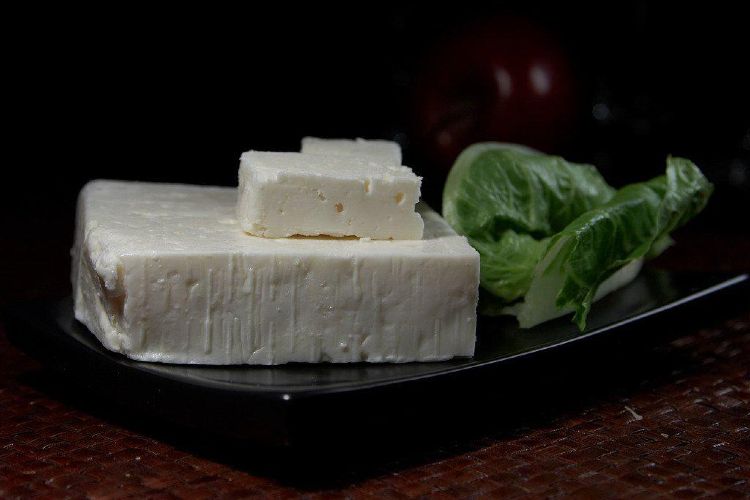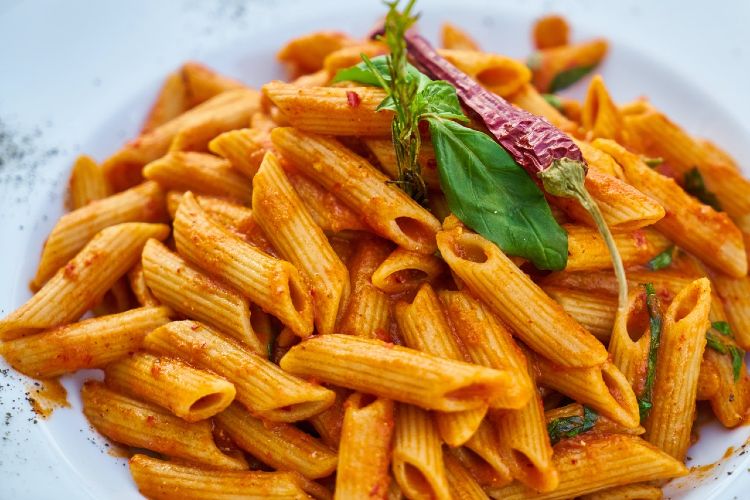Mint vs Peppermint: What’s The Difference and Why Does It Matter
In the culinary world, flavor extracts are akin to a painter’s palette of colors; they offer a variety of shades and hues to your dishes, allowing you to customize and refine tastes to an exquisite degree.
Whether you are baking cookies, whipping up a smoothie, or creating a marinade, extracts help to intensify flavors, add new dimensions, and ultimately elevate your culinary creations.
From vanilla and almond to more unique flavors like hazelnut and lavender, the options are abundant.
However, when it comes to the world of minty freshness, two contenders often come to mind: mint extract and peppermint extract.
Given their similar names and common applications, mint and peppermint extract are frequently misunderstood as interchangeable.
However, each brings its own unique flavor profile and set of benefits to the table, or in this case, to the dish.
Mint vs Peppermint Comparison Chart
| Category | Mint Extract | Peppermint Extract |
|---|---|---|
| Origin | Typically from spearmint plants | Hybrid of watermint and spearmint |
| Flavor Intensity | Milder | More intense |
| Flavor Notes | Sweet, herbaceous, earthy | Strong, minty, pungent |
| Major Compounds | Carvone, limonene | Menthol, menthone |
| Common Pairings | Chocolate, fruits, lamb | Dark chocolate, coffee, holiday treats |
| Culinary Versatility | High (suitable for both sweet and savory dishes) | Moderate (best in specific recipes requiring intense flavor) |
| Popular in Beverages | Yes (mojitos, mint iced tea) | Yes (peppermint lattes, herbal teas) |
| Shelf Life | 3-4 years if stored properly | 3-4 years if stored properly |
| Substitutability | Can be used in place of peppermint, may require more for similar flavor intensity | Can be used in place of mint, may require less due to stronger flavor |
Mint Extract
Origins
The history of mint as a flavoring agent and medicinal herb dates back thousands of years, finding its roots in ancient civilizations like Egypt, Greece, and Rome.
Over the centuries, mint has made its way into various cultures and cuisines, earning a reputation as a versatile plant. Extracts are generally a more recent development, becoming popular as culinary arts and food sciences advanced.
Types of Mint Used
When we refer to “mint extract,” we are usually talking about an extract derived from spearmint leaves.
Spearmint, scientifically known as Mentha spicata, is one of the more than two dozen species in the mint family and is characterized by its bright, sweet, and slightly less intense flavor compared to peppermint.
While there are many other types of mint like pineapple mint, apple mint, and even chocolate mint, spearmint is the most commonly used for making mint extract.
Peppermint Extract
Origins
Peppermint has a somewhat more defined lineage compared to other mints. Originating in Europe, peppermint is actually a natural hybrid of spearmint and watermint.
It has been cultivated and used for centuries, both for its intense flavor and its medicinal properties.
Like spearmint, peppermint has been extracted and concentrated over time, leading to the popular peppermint extract we commonly use today.
Types of Peppermint Used
The peppermint used for extract is usually the species Mentha × piperita. This type of peppermint is known for its high menthol content, which contributes to its intense flavor and cooling sensation.
There are also different cultivars of peppermint, like black peppermint and white peppermint, which have slightly different characteristics but are generally used interchangeably in the creation of peppermint extract.
Peppermint as a Hybrid Mint
It’s worth noting that peppermint is, in fact, a hybrid. It inherited some of the best characteristics from both of its parent plants – spearmint’s sweetness and watermint’s intensity.
This hybridization is what gives peppermint its unique and powerful flavor profile, which is more intense and concentrated compared to other mints.
Chemical Composition
Mint Extract
Mint extract, primarily derived from spearmint, contains a range of volatile oils and compounds that contribute to its characteristic flavor and aroma. The most noteworthy of these is carvone, which gives spearmint its sweet, herbal aroma. Other significant compounds include limonene, 1,8-cineole, and β-myrcene. Together, these compounds create a complex profile that is both sweet and subtly earthy.
Peppermint Extract
Peppermint extract has a more intense profile, thanks to its high menthol content. Menthol accounts for up to 40% of peppermint oil and is the primary contributor to its strong, pungent aroma and cooling sensation. Additionally, peppermint extract contains other compounds like menthone, isomenthone, and menthyl acetate, which add complexity to the flavor profile.
Comparison of the Chemical Composition of Both
Overlapping and Unique Compounds
Both mint and peppermint extracts contain some similar volatile oils, such as limonene and 1,8-cineole. However, the concentrations differ, leading to distinct sensory experiences. Spearmint’s carvone gives it a milder, sweeter profile, while peppermint’s high menthol content makes it more intense and refreshing.
Intensity and Flavor Characteristics
The high menthol content in peppermint extract means that it can easily overpower other flavors in a dish. Mint extract, with its dominant carvone, is usually milder and less likely to dominate other flavors. Thus, peppermint is often better suited for recipes that call for a robust, minty kick, whereas mint extract is generally more versatile and can be used in both sweet and savory dishes without overwhelming other flavors.
Flavor Profiles
Mint Extract
Typical Flavors and Sensations
Mint extract, predominantly made from spearmint, offers a light, sweet, and herbaceous flavor. It provides a gentle cooling sensation, far less intense than its peppermint counterpart. Mint extract brings to mind the lushness of a garden, evoking more natural, earthy undertones compared to peppermint.
Common Pairings
Mint extract’s milder flavor profile allows for versatile pairings. It complements both sweet and savory dishes.
- Sweet Pairings: Mint extract pairs beautifully with chocolate, fruits like strawberries and blueberries, and even desserts like ice cream and cookies.
- Savory Pairings: It also works well in marinades for lamb, as a flavoring agent in Mediterranean salads, and in beverages like mojitos or mint iced tea.
Peppermint Extract
Typical Flavors and Sensations
Peppermint extract brings an intense, bright, and invigorating flavor, thanks to its high menthol content. The extract produces a strong cooling sensation, which can dominate other flavors if not used sparingly.
While it also has herbal and sweet notes, these are usually overshadowed by its robust minty intensity.
Common Pairings
Because peppermint extract has such a pronounced flavor, it tends to pair best with ingredients that can hold their own against its potency.
- Sweet Pairings: Peppermint extract is a classic in holiday treats like peppermint bark and candy canes. It also pairs well with dark chocolate, coffee, and is often used in holiday beverages like peppermint lattes and hot cocoa.
- Savory Pairings: Less commonly used in savory dishes, peppermint extract can still be found in some ethnic cuisines, often paired with strong flavors like those found in spicy curries.
Applications in Food and Beverage
Mint Extract
Suitable Recipes and Cuisines
Mint extract’s milder flavor profile makes it a versatile ingredient in various recipes and cuisines. It is often used in:
- Desserts: Mint chocolate chip ice cream, mint-flavored cookies, and fruit salads.
- Savory Dishes: Lamb marinades, Greek tzatziki sauce, and Middle Eastern tabbouleh.
- Ethnic Cuisines: Frequently found in Mediterranean and some Asian cuisines.
Beverages
Mint extract is also a popular addition to beverages, offering a refreshing but not overpowering flavor. You can find it in:
- Teas: Like mint iced tea or hot mint green tea.
- Cocktails: Such as mojitos or mint juleps.
- Non-Alcoholic: Mint lemonade or various smoothies.
Peppermint Extract
Suitable Recipes and Cuisines
Peppermint extract’s intense flavor lends itself well to specific recipes that require a strong minty presence. It is commonly used in:
- Desserts: Peppermint bark, peppermint patties, and holiday cookies.
- Savory Dishes: Less common but can be used in spicy dishes that can counterbalance its intensity.
- Ethnic Cuisines: Limited but occasionally found in some Indian dishes and in Thai cuisine.
Beverages
Peppermint extract is also an excellent addition to beverages but usually in smaller amounts due to its potency. It can be found in:
- Teas: Like peppermint herbal tea, especially popular for its potential digestive benefits.
- Cocktails: Featured in holiday-themed cocktails or drinks requiring a minty kick.
- Non-Alcoholic: In peppermint hot chocolate or lattes.
Side-by-Side Comparison
- Mint Extract: Shines in its versatility and mild flavor, making it suitable for both sweet and savory dishes. However, if you’re looking for a pronounced minty kick, mint extract might fall short.
- Peppermint Extract: Excellent for recipes requiring a robust mint flavor and cooling sensation. It is less versatile due to its potency and can overwhelm other flavors if not used carefully.
Shelf Life and Storage Recommendations
Both mint and peppermint extracts have a relatively long shelf life if stored correctly, often lasting up to 3-4 years.
- Storage: Keep the extracts in a cool, dark place, away from direct sunlight. The pantry is usually a good option. Make sure the lid is tightly sealed to maintain flavor potency.
- Shelf Life: While the extracts will not necessarily “expire,” they will lose their potency over time. If you notice a faded aroma or diminished flavor, it may be time to replace the bottle.
FAQs
Can You Substitute One for the Other?
While mint and peppermint extracts are similar, they are not perfect substitutes for each other due to their differing flavor intensities and profiles.
However, in a pinch, they can be interchanged, but it’s essential to adjust the quantity used.
For example, if a recipe calls for peppermint extract but you only have mint, you may need to use a little more to achieve a similar level of minty flavor.
Conversely, if you’re substituting peppermint for mint, use less to avoid overwhelming the dish.
Are They Interchangeable in Recipes?
They can be interchanged to some extent, but the end result may taste different than the original recipe intended.
For recipes where the minty flavor is not the primary focus – like a chocolate cake with a hint of mint – you could swap one for the other without drastically altering the overall taste.
But for recipes where the mint flavor is central – like in peppermint bark or mint juleps – the type of extract used will significantly impact the flavor, and it’s best to stick with what’s called for.
Can You Substitute Peppermint For Mint?
Yes, peppermint can be substituted for mint and vice versa, but it’s important to consider the differences in flavor intensity. Peppermint has a more robust, intense flavor due to its high menthol content.
Therefore, if you’re using peppermint in place of mint, you may need to reduce the quantity to prevent overpowering the dish.
Conversely, if a recipe calls for peppermint and you only have mint, you may need to use a bit more to achieve a similar level of flavor.
Is Peppermint Made From Mint Leaves?
Yes, peppermint is a type of mint, specifically a hybrid between watermint and spearmint. It is made from the leaves of the peppermint plant (Mentha × piperita).
Like other types of mint, the leaves are harvested and then either dried or used to extract essential oils, which make up peppermint extract.
Does Peppermint Smell Like Mint?
Peppermint does smell like mint, but it has a much more intense aroma.
The high menthol content in peppermint gives it a very strong, pungent smell compared to the milder, sweeter aroma of other types of mint like spearmint.
While both share a similar herbaceous base note, peppermint has a more piercing and concentrated scent.
Is Peppermint Or Mint Extract Better?
Neither is objectively better; it depends on what you’re looking for. Mint extract is more versatile due to its milder flavor and can be used in both sweet and savory dishes.
Peppermint extract has a more potent flavor and is better suited for recipes where a strong minty flavor is desired, such as in holiday treats like peppermint bark.
Your choice should depend on the specific needs of the recipe and your personal taste preferences.
What Flavor Goes With Mint?
Mint has a versatile flavor profile that pairs well with a variety of ingredients. Some popular combinations include:
- Chocolate: A classic pairing, especially in desserts.
- Fruit: Berries, citrus, and tropical fruits can be elevated with a hint of mint.
- Lamb: In savory dishes, mint sauces or marinades often accompany lamb.
- Spices: Ginger, cardamom, and cumin can complement mint in more complex recipes.
What Fruits Pair Well With Mint?
Mint pairs exceptionally well with many fruits, adding a refreshing twist. Some fruits that go well with mint include:
- Berries: Strawberries, blueberries, and raspberries.
- Citrus Fruits: Lemon, lime, and orange.
- Tropical Fruits: Pineapple, mango, and watermelon.
- Stone Fruits: Peaches and plums can also benefit from a touch of mint.
Mint can be used in fruit salads, smoothies, or as a garnish to elevate the natural flavors of these fruits.




